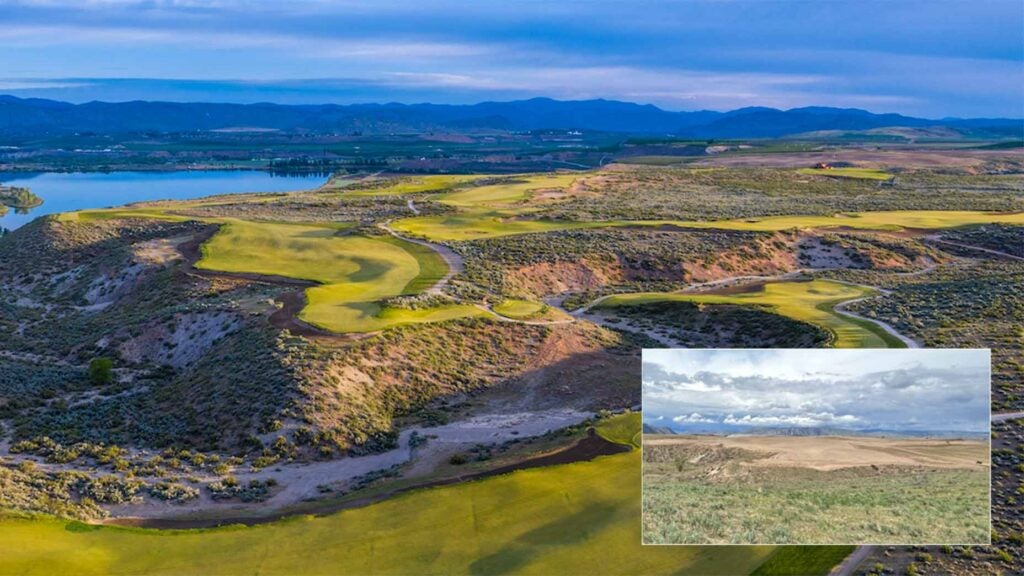When it first opened in 2014, Gamble Sands — a stunning, high-plains campaign created by talented architect David McLay Kidd — rose to instant stardom. Located in northern Washington, just an hour south of the Canadian border, the original layout at Gamble Sands is not just an eye-candy course loaded with “wow” moments. It’s also a hacker-friendly layout with wide fairways, generous greens, plenty of slopes that correct errant shots and, for the most part, non-lethal bunkering.
Then, in 2021, Kidd’s second course, an exquisite little 14-hole track called Quicksands, opened to much acclaim.
And now Kidd’s third course at Gamble Sands is well into construction. It is on schedule for a grand opening in spring of 2025.
This all begs the question: What does DMK have up his sleeve for this third course? Will it be loaded with diabolical nastiness to make up for his “nice guy” approach on the first course? Or will he double down on being kind and considerate to the less-skilled player? And what about the terrain itself? I recently chatted with him to find out.
GOLF: Ok, let’s cut to the chase. What can we expect with your third course at Gamble Sands? How will it compare to the original Sands course?
DMK: Well, for starters, the terrain is actually much more dramatic. There’s more going on. It’s more technical and, to be honest, better for golf. There are big ravines, more natural features, more elevation change, more slopes to utilize, and so on. The views will blow people away. It’s going to have more “wow” moments, for sure. But there will be a similar ethos. It will be wide and massive in scale.
Where is this course situated in relation to the first course?
It’s just north of the existing course. So when you’re driving into Gamble Sands from Brewster you’ll be able to see many of the new holes to your right.
What is the new course going to be called?
We don’t have a name yet.
How about the difficulty of this second course? Are you playing nice?
Hmmm. Well, the greens are going to be smaller and missing them will be worse. The slopes and fall-offs are going to be more challenging. The bunkers are going to be deeper, smaller and more difficult. In fact, the bunkering will look and play more like Pacific Dunes. So, yes, I’d say it’s going to be at least a couple of shots tougher.
Alright, so let’s just say, hypothetically, that someone goes out there and shoots a million. Can’t hit a shot. It happens. What about the scenic value of the course? Can it save the day?
The views are going to be exceptional and superior to what you have on the first course. There are many panoramic vistas where you can look down the entire Columbia River Valley and see the lake, the mountains and the orchards. It will be jaw-dropping at numerous moments during the round.
On my recent tour of the site with general manager Blake Froling, he singled out the par-3 11th hole as being an early candidate for “signature hole.” It looks like it will be an awesome little knee-knocker on the edge of the bluff. What can you tell me about this hole?
It’s going to be a short and sweet test with an amazing view from the tee. But you won’t want to miss it there. That could wreck your day. It’s going to be a thin green with 100-foot drop-offs on both sides.
What about other signature holes?
Well, things are constantly evolving out there as we discover new features, new slopes to utilize, new angles, and so on. But I’ll say this: a few of the holes that we thought would be weaker are now going to be some of the strongest. But it’s still too early to single out favorites. There’s a lot more shaping to be done.
So how many holes are currently shaped? Is anything seeded?
We’ve currently rough shaped about half the golf course. Three holes are fully shaped. We’ll start seeding [this month].
What’s the current state of your own game? Are you playing much?
I’m just coming off the DL. I’ve got a new knee. I’m a 10 but I’d like to be a 5. But when [the golf is] bad, it’s still good.
